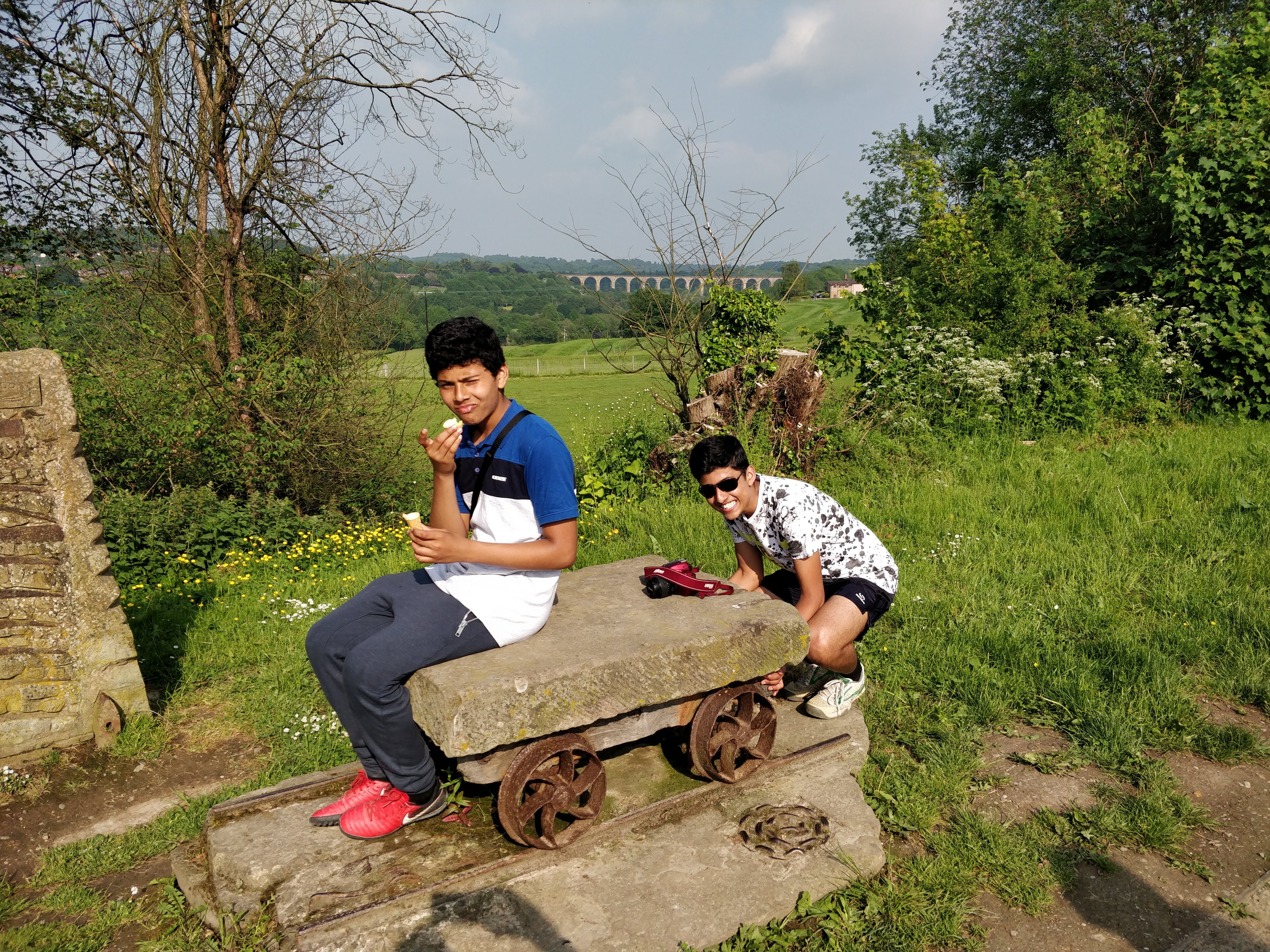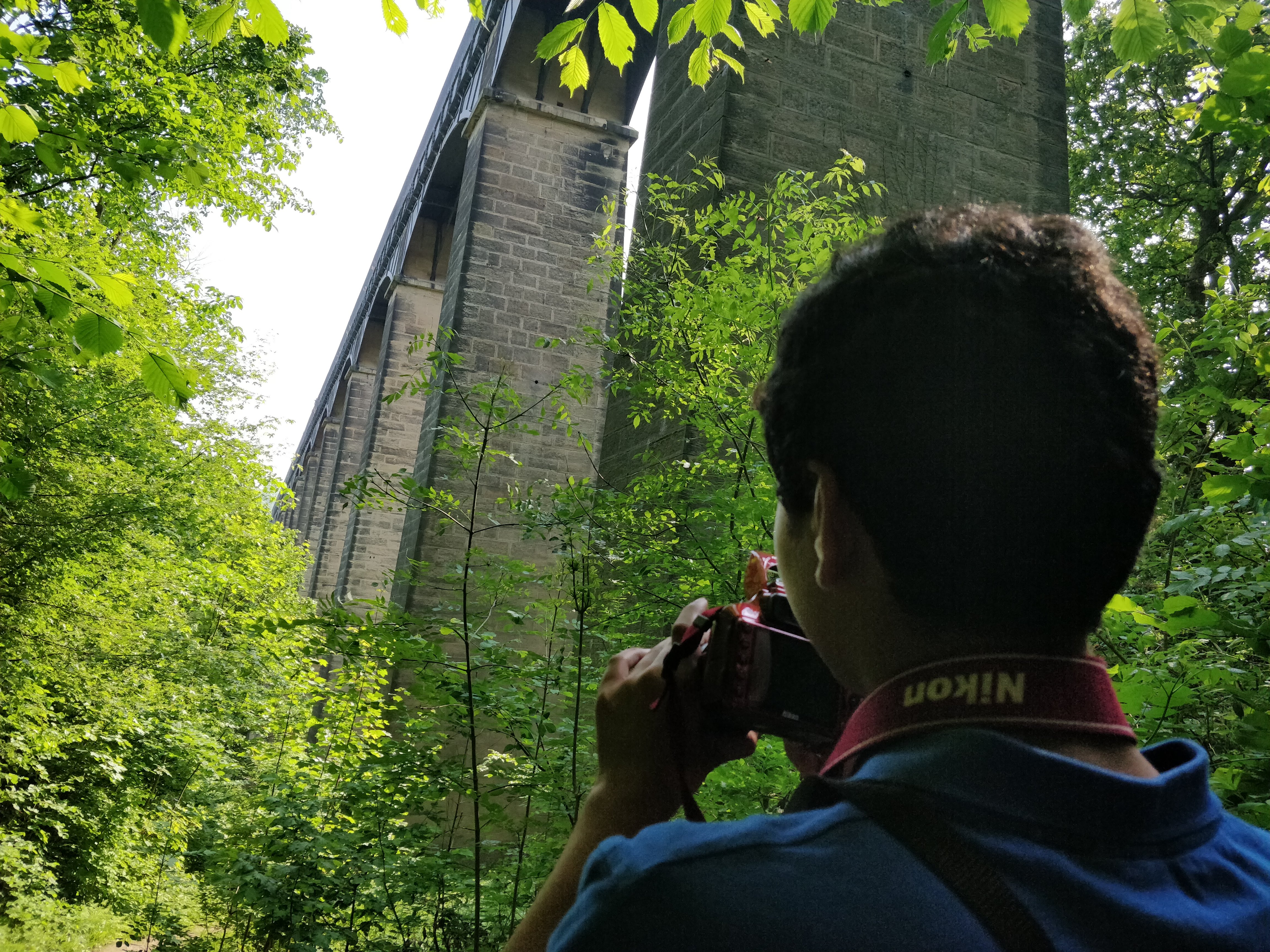Wales is another adventure altogether in the United Kingdom and our second visit was fantastic. We ventured south from Lake District after a wonderful weekend of activities, to the Pontcysyllte Aqueduct Bridge to discover a feat of engineering.
Location
The Bridge itself is in a magnificent location both scenically and for peace of mind. It is odd to describe exactly where you need to go after your arrival because there are two parking areas, one on either end of the bridge; where you find canal boats, you can find a parking and make your way to the bridge that should be within your sight.
With huge open space, and the sight itself standing at an impressive height, it should be easy to find the aqueduct. The Bridge stands almighty in between two flashing green grasslands and over the River Dee. On one side is a large empty grassland and on the other, an interesting site with water management buildings and in the distance another colossal bridge.
As you walk towards the bridge itself, you stroll past the classic canal boats floating freely on water, the shading trees and the noise of a pleasant atmosphere. Regardless of your situation, you’ll feel relaxed. When you approach a more revealing situation, you will begin to uncover a spectacular sight – a tall, old bridge. The closer you walk, the more you discover and although you may feel like 307m is long, it disappears in a snap.
Whilst you’re surrounded in this elegant environment, you feel a sense of relief despite standing 38m above ground. However, there are some hurdles. The narrow lane enlightens the adventure as some may picture themselves falling into the water. Additionally, you will observe that on the opposite side of the lane, there isn’t any support other than the iron trough which is protecting the canal boats. This may alarm some of us. Equally, it really makes you ponder on the engineering…

Bridge Walkway
When you step onto the bridge walkway, the game changes. Alongside being accompanied by nature, you may feel a tickling sense of fear. As anyone would suggest, there is no need to panic; the aqueduct is, in fact, one of the most interesting constructions I’ve seen. Interesting in the sense that it can withstand lots of mass(scientifically accurate term) pretty much with iron and stone.
Canal boat crossing the aqueductThe walk was surprisingly brisk and amusing. It was a strong concrete path with some old and some newly painted railings on the side. The lane is narrow and despite the path looking extended, it is as quick as lightning when you walk.
Similar to any destination, there is more to unravel in this aqueduct. You can walk down to get another impression of the mighty piece. You can also take a canal boat if you have the guts to travel across the aqueduct.
Engineering

The engineering of this bridge takes us back to 1795 when the bridge was under construction by Thomas Telford. Before Telford was handed this project, he had experience of a cast iron aqueduct through the Longdon-on-Tern Aqueduct on the Shrewsbury Canal. The initiation was to join the canal across to the other side over the River Dee. After ten years of construction, the bridge was completed with 18 immensely arched pillars made of stone and cast iron. The project was successfully completed and Telford becomes one of the most famous civil engineers with this feat of engineering.

In my opinion, one of the engineered features of the bridge struck me so quickly that I researched it on the spot. I noticed that the bridge had small gated rectangular shaped dig-outs scattered at the edge of the walkway and I considered how they were useful. I acquired that when they had to replace any of the mechanism in the water, they would allow water to pass through these gates and to pour down from the side of the bridge to empty water. Now that’s amazing!

Currently, the aqueduct is maintained by the UNESCO foundation and is inspected once every five years. It earned the World Heritage status in 1999 and is a well-worth visit for tourists.
Although our visit to Wales was brief, it had a permanent impression. We appreciated Telford’s extraordinary work and it’s a perfect visit for any tourist, especially, on a spring evening with the fresh breeze.


Leave a Reply